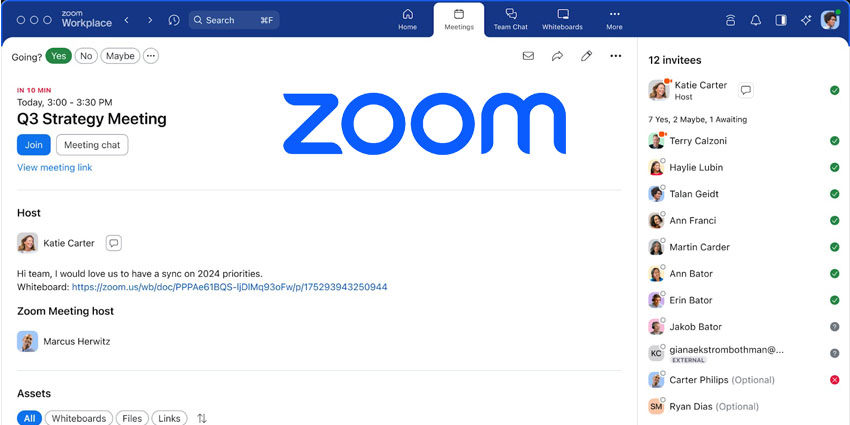A company dedicated to offering mixed reality, or “augmented” reality experiences; Magic Leap refers to itself as a “spatial computing” company. In other words, it’s a business that’s all about mixing the virtual world, with the physical environment we live in.
The world has been experimenting with mixed reality for quite a while now. You can catch AR Pokémon your phone, and companies like Microsoft are exploring alternative realities in the workplace with the HoloLens. However, Magic Leap wants to take the way we experience mixed reality to a whole new level, by building alternative viewpoints into a standard pair of glasses you could wear every day. So far, Magic Leap has raised more than $2.3 billion in investments, from companies like JPMorgan, Google, and more.
The question is, has all that investment paid off?
After years of generating industry hype, Magic Leap finally revealed their Leap One headset on the 8th of August, and it’s unlike anything you’ve ever seen before.
In the Box: What You Get from the Magic Leap One
First up, it’s worth noting that the Magic Leap One is currently available in “Creator” edition – designed for developers and people who want to build their own mixed reality experiences using the headset. However, the company claims that anyone can use and enjoy the Magic Leap One headset. Ideally, customers in the US will be able to access AT&T demonstrations at local stores by the end of this year.
Just like any mixed reality headset, the Magic Leap One blends immersive graphics and real-world views to transform your surrounding environment. When you unbox the system, you’ll find three pieces of equipment, including:
- The “Lightwear” headset: A slim and streamlined headset covered in tracking cameras to map your environment and convey it back to you through the darkened glass lenses
- The “Light pack” wearable computer: This is where all the AR magic happens. The computer is small enough to clip to your belt, and it helps to process images which it sends to the “photonics chips” in the glasses. The puck-shaped PC comes with a Nvidia Tegra X2 chipset, 128GB of storage, 8GB of memory and up to 3 hours of battery life
- The “totem” handheld controller: This is a little remote-style controller which comes with a bumper button, home button, and a large round trackpad on top. It’s similar in design to the Oculus Rift control, except for the fact that the controller is fully tracked by the headset camera, to give you a more extensive range of motion
The Magic Leap One Experience
Perhaps the first thing that sets the Magic Leap One apart from the other mixed reality headsets on the market is the fact that it’s so attractive. The Leap One is so much less clunky than anything we’ve seen in AR headsets up to now. At first glance, it looks like a pair of high-tech steampunk goggles designed by a creative cosplay fan.
The circular lenses, according to lead designer Gary Natsume, were chosen to evoke the universal symbol for glasses. In other words, the design is supposed to be something familiar, but futuristic too. While there’s a headphone jack built into the system, the most immersive experiences come from letting the audio flow around you, through the small in-build speaks situated beside your ears.
According to author Adi Robertson from “The Verge,” the headset is surprisingly comfortable. She even claims she forgot she was wearing the Lightpack after a while, though the mini-computer started to heat up towards the end of her hour-long trial:
It’s easy to see why this system would be so comfortable, as a machine that’s much lighter and more streamlined than the tools that came before it.
Of course, one of the most significant factors contributing to comfort with a mixed-reality device is the field of view – something that many headsets have struggled with up to now. Magic Leap has enhanced the field of view offered by competitors like Microsoft HoloLens with a reach that’s about 45% better. Unfortunately, beta testers feel that the field of view still needs to grow if we’re ever going to get a fully immersive AR experience.
Saying that, despite the issues with visuals, the Magic Leap One is still very impressive compared to many of the mixed reality headsets we’ve seen up to now. In fact, it might be one of the best options on the market for those seeking a “whole new world” of immersive environments.
The Quest for Practical Mixed Reality
Like many companies investing in mixed reality today, Magic Leap hopes to eventually create an everyday pair of glasses that you could wear to the office or take with you on the tube. Unfortunately, we may have a way to go before we actually reach that point. The company suggests that the hardware can only work reliably indoors, though you can always use it at your “own risk” outside.
However, Magic Leap thinks that this slow integration towards a world where mixed reality can travel with you on the go might be a good thing. After all, we have enough trouble will people walking into traffic because they’re staring at their smartphones. Imagine how difficult it will be to reduce road accidents when people can actively transform their field of vision.
While you’re playing with the Magic Leap One indoors, you’ll be able to use Wi-Fi and Bluetooth connectivity to explore the internet. Additionally, the company has signed a deal with AT&T to access mobile data in the future. There’s a suite of apps built-in too, including a web browser called Helio, and a social suite chat system. You can also play a game of “Dr. Grordbort’s invaders” to pass the time.
The Magic Leap World store also features an artistic tool for developers called “Creator,” and a preview of an NBA app too.
Jumping into the Future with Magic Leap
So, is this the mixed-reality headset that we’ve all been waiting for? Perhaps not, but it is taking us closer to where we need to be. As CNET’s Scott Stein put it, it’s a step in the right direction, but “not a game changer.”
Saying that it’s still one of the best mixed reality experiences on the market today, and certainly the most comfortable. The Magic Leap One is an insight into the true potential of mixed reality headsets, and an example of what we can expect going forward.
If you want to try the system for yourself, you can go to the Magic Leap website and check whether the company is operating in your area yet.







